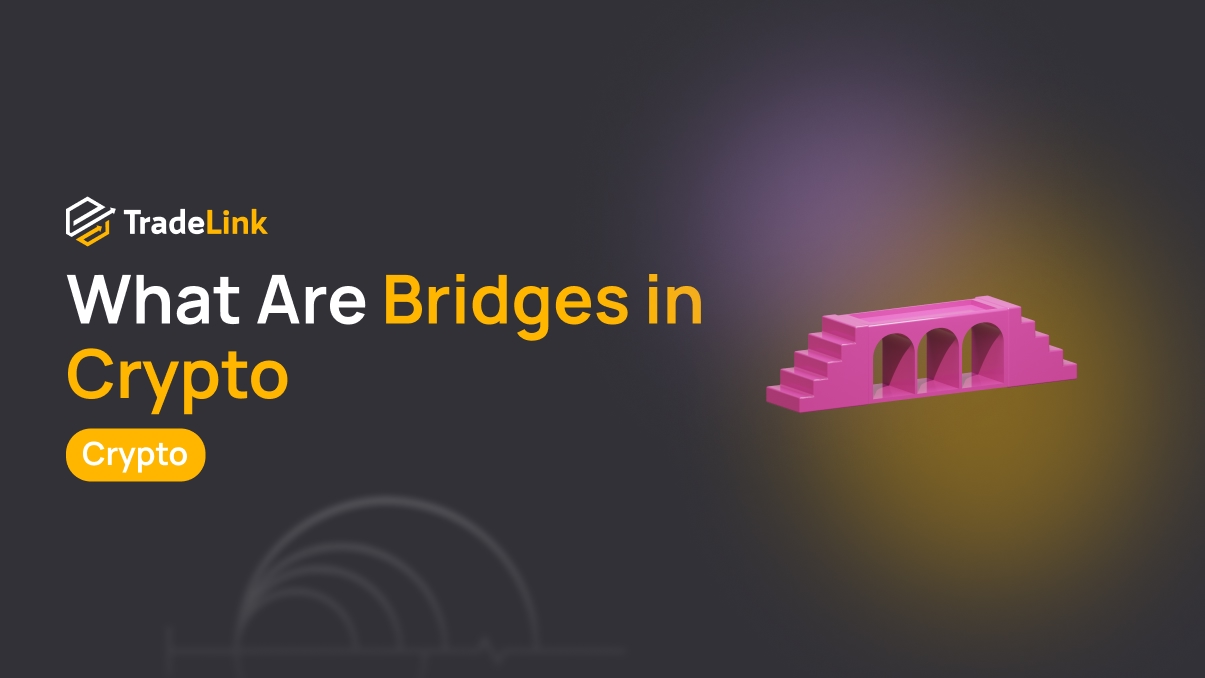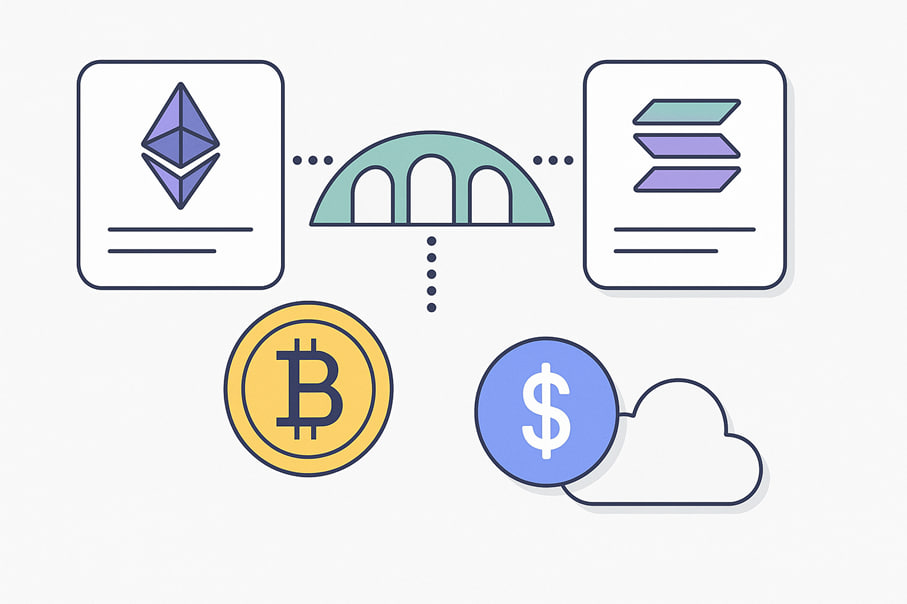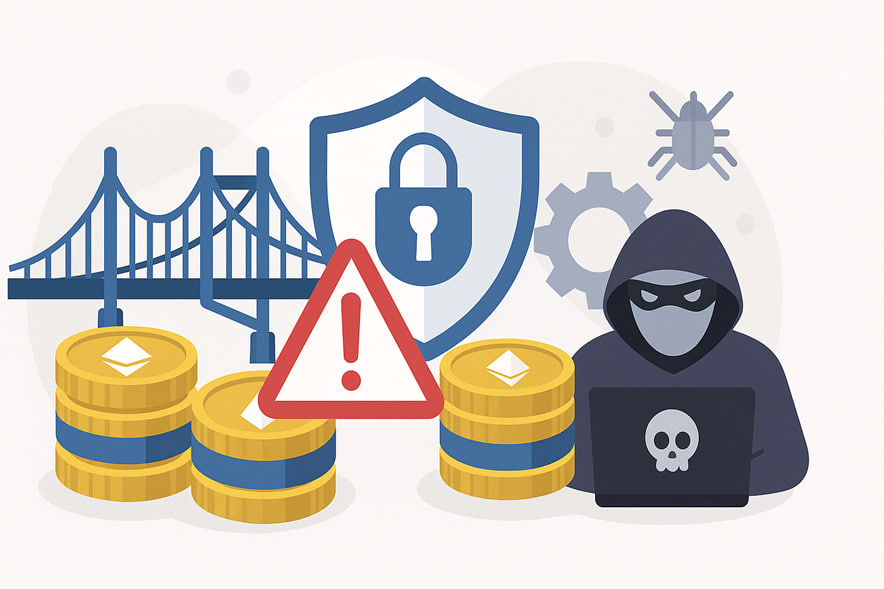What Are Bridges in Crypto and How Cross-Chain Transfers Work

Contents
- Introduction
- What Are Crypto Bridges and Why Are They Needed
- How Cross-Chain Transfers Work
- Wrapped Tokens and Their Function
- Types of Bridges: Trusted and Trustless
- Examples of Popular Bridges and Protocols
- Risks and Issues When Using Bridges
- The Future of Cross-Chain Infrastructure
- Conclusion
Introduction
Cryptocurrencies operate on blockchains — independent networks with their standards and rules. Each blockchain is a closed system that is not directly connected to others. For example, tokens on the Ethereum network cannot be used on the Solana network without special solutions in place. This is similar to a situation where bank accounts in different countries have no direct link, and transfers between them are impossible without an intermediary.
This presents a significant challenge: facilitating the exchange of assets and data between blockchains. Modern users and developers increasingly interact with multiple networks at once. To keep the ecosystem convenient and scalable, a technology is needed that allows blockchains to communicate.
Cross-chain bridges solve this problem. They enable digital assets to move seamlessly between networks, combining separate blockchains into a single, unified crypto ecosystem. This opens the path to a more flexible and interconnected Web3 space.
In this article, we will examine how crypto bridges function, their necessity, and the various types of bridges that exist.
What Are Crypto Bridges and Why Are They Needed

Crypto bridges are technologies that enable the transfer of tokens and data between incompatible blockchains. When using bridges, tokens are not physically moved. Instead, the asset is locked on one network, and its equivalent is created on another.
The process includes the following steps:
- Locking tokens on the source blockchain
- Creating a wrapped version of the token on the target network
- Releasing the original token during the reverse operation
This mechanism enables value transfer without changing the total token supply. Bridges are also used to transfer commands and metadata, which is essential when working with decentralized applications that interact with multiple networks simultaneously.
How Cross-Chain Transfers Work
The cross-chain transfer process relies on interaction between smart contracts and validation mechanisms across networks.
Key components:
- Smart contracts in both networks: one locks the original asset, the other issues the equivalent
- Validators or oracles: verify the lock and initiate the issuance of the copy
- Reverse operation: burning the wrapped token and unlocking the original
Wrapped Tokens and Their Function

Wrapped tokens are digital copies of original tokens issued on another network. They represent the original asset and are fully backed by a reserve.
Functions of wrapped tokens:
- Allow use of assets on a different network without native support
- Maintain a 1:1 value peg to the original
- Expand functionality and liquidity of the assets
Example: Wrapped BTC (wBTC) on Ethereum is a token that represents actual Bitcoin. Each wBTC is backed by one real BTC held in reserve and cannot be used until the corresponding wBTC is destroyed.
Types of Bridges: Trusted and Trustless
There are two types of cross-chain bridges:
| Type | Management | Security Mechanisms | Transparency | Examples |
|---|---|---|---|---|
| Trusted | Centralized (humans) | Relies on operator honesty and their infrastructure | Limited | Multichain, Wormhole |
| Trustless | Smart contracts and code | Automatic checks, cryptography, algorithms | High | Stargate, Thorchain |
Examples of Popular Bridges and Protocols
Some of the most well-known cross-chain solutions include:
- Wormhole — supports Ethereum, Solana, BNB Chain, and others. Built on a trusted validator model.
- Multichain — operates with dozens of blockchains. Previously known as Anyswap, widely used in EVM-compatible ecosystems.
- Synapse — focuses on speed and simplicity. Supports Layer 2 networks and uses a hybrid security model.
- Stargate — based on LayerZero technology. Offers instant transfers with liquidity preservation—a trustless architecture example.
These bridges differ in security models, speed, fees, and the number of supported networks. The choice depends on goals and acceptable risk levels.
Risks and Issues When Using Bridges

Although bridges are essential to crypto infrastructure, they carry serious risks:
- Smart contract bugs: even minor errors can lead to loss of funds
- Centralization: the managing party may be untrustworthy
- Hacks: bridges are frequent targets for attacks
- Liquidity loss: wrapped tokens may become unwanted
Major incidents:
- Wormhole — In February 2022, an attacker exploited a smart contract vulnerability between Solana and Ethereum and “created” 120,000 wETH without backing, resulting in a theft of approximately $325 million.
- Ronin Bridge — In March 2022, hackers gained control over private keys of five validators and transferred assets worth about $615 million.
- Horizon Bridge — In June 2022, a vulnerability in the Harmony bridge’s multisig was exploited, allowing hackers to steal around $100 million.
These cases show that even with audits and caution, risk remains. Vulnerabilities may be hidden, and no bridge offers absolute safety.
The Future of Cross-Chain Infrastructure
Cross-chain technologies continue to evolve. Key directions include:
- Modular Blockchains
Blockchains that separate functions (such as networking, storage, computation, and interaction) into distinct modules may simplify bridge integration and reduce system load. - Universal Standards
Developing unified rules for cross-chain communication can improve compatibility among bridges and reduce errors in data transfers. - Native Cross-Chain Communication
Some future blockchains aim to support built-in interoperability, potentially reducing dependence on external bridges. - Liquidity Aggregators
Services that find the most efficient route for asset transfers between networks may simplify usage and reduce user costs.
Conclusion
Transferring assets and data between blockchains remains one of the primary challenges in the development of crypto infrastructure. Cross-chain bridges remain a viable solution despite their risks and technical limitations. Their use demands attention to security and understanding of architectural differences.
With the rise of new approaches, such as built-in cross-network communication and modular systems, the role of bridges may change. But for now, they serve as the critical link between ecosystems.